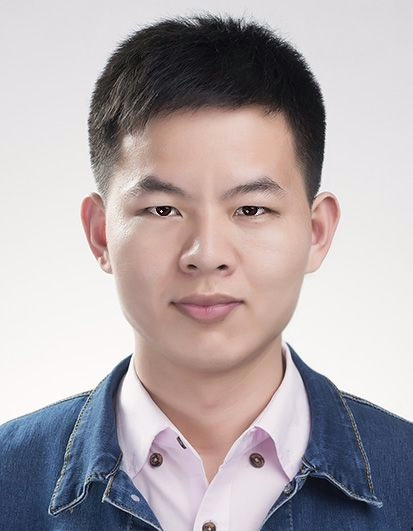
王斌
E-mail: 专访报道(点击蓝色字体可阅读)
Nengzhi Yao, Bin Wang*, Hao Wang, Chen-Long Wu, Xuesheng Wang*.Hydrodynamic dipole-driven theory for active flow control in heterogeneous porous media. Physics of Fluids 36 (2024) 094126 [一区]
Nengzhi Yao, Hao Wang, Chen-Long Wu, Bin Wang*, Xuesheng Wang*.Convective Thermal Rot-amplifiers with Venturi-Effect and Nonreciprocity Characteristics: Rotating and Amplifying Thermal Fluid Flows Simultaneously. International Communications in Heat and Mass Transfer159 (2024) 108063. [一区]
Chen-Long Wu, Bin Wang*, Neng-Zhi Yao, Hao Wang, Xuesheng Wang*. Meta-hydrodynamics for freely manipulating fluid flows. Physics of Fluids 36(6) (2024) 063613. [一区]该研究提出提出超构流体力学理论用于设计不同的超构流动器件以实现自由的流动控制🧑🏼💻🚃。
Chunzhen Fan*, Chen-Long Wu, Yuanyuan Wang, Bin Wang∗,Jun Wang∗, Thermal metamaterials: From static to dynamic heat manipulation. Physics Reports 1077 (2024) 1–111. [一区, Top期刊, IF=30]
Chen-Long Wu, Bin Wang*, Hao Wang, Neng-Zhi Yao, Xuesheng Wang*. Optimal design of maximally amplified thermal concentrators with homogeneous and isotropic materials. International Communications in Heat and Mass Transfer 152 (2024) 107326. [一区]
Hao Wang, Nengzhi Yao, Bin Wang*, Xuesheng Wang*. A Transient Transformation Theory for the Design of Convective Thermal Metamaterials: Cloaks, Concentrators, and Rotators. International Journal of Heat and Mass Transfer 221 (2024) 125088. [一区,Top期刊].
Nengzhi Yao, Hao Wang, Bin Wang*, Xuesheng Wang*, Jiping Huang*, Convective thermal cloaks with homogeneous and isotropic parameters and drag-free characteristics for viscous potential flows. iScience 25 (2022) 105461.[二区]
Bin Wang*, JipingHuang*. Hydrodynamic metamaterials for flow manipulation: Functions and prospects. Chinese Physics B 31 (2022) 098101.[30周年庆特邀综述]
姚能智🧒,王浩🥲,王斌*,王学生*. 基于变换流体动力学的文丘里效应旋聚器的设计与非互易特性研究, 物理学报 71 (2022) 104701.
王浩❄️,姚能智,王斌*,王学生*. 流动隐身衣的均匀化设计与减阻特性, 物理学报 71 (2022) 134703.
Hao Wang, Neng-Zhi Yao, Bin Wang*, Tien-Mo Shih, and Xuesheng Wang*, Homogeneous Venturi-effect concentrators for creeping flows: Magnifying flow velocities and heat fluxes simultaneously. Applied Thermal Engineering 206 (2022) 118012. [一区👨💻,Top期刊]
Bin Wang, Tien-Mo Shih,Liujun Xu, Gaole Dai, and Jiping Huang. Intangible hydrodynamic cloaks for convective flows. Physical Review Applied 15 (2021) 034014. [二区] 该研究设计出了在一定雷诺数范围内有效的👨🏼⚕️、参数均匀的流体力学隐身衣,使包裹了隐身衣的物体在流体中运动,不对流场产生干扰,该研究突破了过去流体动力学隐身衣适用于蠕动流的局限,为更高雷诺数下的流体动力学隐身衣设计打开了新的思路。
Bin Wang, Tien-Mo Shih, and Jiping Huang. Transformation heat transfer and thermo-hydrodynamic cloaks for creeping flows: manipulating heat fluxes and fluid flows simultaneously. Applied Thermal Engineering 190 (2021) 116726. [一区,Top期刊] 该研究证明了蠕动流情况下的对流传热控制方程组满足坐标变换不变性并设计出了含有对流情况下的热隐身衣;建立起的变换传热学理论💇🏻,克服了过去长期以来热学超材料的研究主要局限于热传导领域的问题🚴🏻♂️,为包含对流的不同功能热学超材料的设计提供了理论基础。
Bin Wang, Tien-Mo Shih, Jiping Huang. Enhancing and attenuating heat transfer characteristics for circulating flows of nanofluids within rectangular enclosures. International Communications in Heat and Mass Transfer 117 (2020) 104800. [二区] 该研究揭示了纳米流体在密闭腔体内随着浓度的增大🕓,既可以出现传热增强又可以出现传热减弱的双重传热效应并解释了相关的机制,为纳米流体的传热强化/热防护提供了理论基础。
Xiwen Chen, Tien-Mo Shih, Bin Wang, Richard Ru-Gin Chang. Buoyancy-driven flows descending toward hottest spots of heated bottom surfaces in enclosures. International Communications in Heat and Mass Transfer 101 (2019) 51–57.[一区]
Xiwen Chen, Tien-Mo Shih, Bin Wang, Chen-Xu Wu. Nusselt number influenced by expansion/ compression, birth/death, and recirculating direction of vortices in elongated enclosures. International Communications in Heat and Mass Transfer 97(2018) 110-117. [一区]
Bin Wang, Tien-Mo Shih, Xiwen Chen, Richard Ru-Gin Chang, Chen-Xu Wu. Anomalous cooling during transient heating processes. International Journal of Heat and Mass Transfer 127 (2018) 1253–1262. [一区,Top期刊]
Bin Wang,Tien-Mo Shih, Xiwen Chen, Richard Ru-Gin Chang, Chen-Xu Wu. Cascade-like and cyclic heat transfer characteristics affected by enclosure aspect ratios for low Prandtl numbers. International Journal of Heat and Mass Transfer 124 (2018) 131–140. [一区,Top期刊]
Bin Wang, Tien-Mo Shih, Bo Tian, Chen-Xu Wu, Richard Ru-Gin Chang. Mildly zigzag heat transfer affected by aspect ratios for recirculating flows in rectangular enclosures. International Journal of Heat and Mass Transfer 107 (2017) 372–378. [一区,Top期刊]
Bin Wang, Tien-Mo Shih, Chen-Xu Wu. Characteristics of instantaneous heat transfer rates in three heat-transfer-coefficient regimes. International Journal of Heat and Mass Transfer 93 (2016) 889–895. [一区🏵,Top期刊]
对本课题组有兴趣的同学🧘🏻♂️,可参考以下问答:
1. 需要哪些基础🦑🌌?
不用担心自己的基础不够🫶🏽,我们的研究只需要学过高等数学、线性代数🐿、传热学和流体力学课程即可⬛️,一般所使用的软件包括Matlab、COMSOL等👩🏽🔬,实验操作都比较简单易上手。本课题组的所有成员都是在加入本组之后才开始阅读相关文献的,都很快掌握并建立了自己的研究思路🧙🏽。
2. 导师会给予怎样的指导?
在前期都会进行细致的指导🫡,明确需要阅读的文献、需要掌握的技能工具和具体的研究课题内容,并辅导理论公式推导、软件操作和实验操作等。在取得一定成长后,导师会根据学生个人情况(如自主科研能力、个人兴趣等)调整指导方式。
3. 对学生有什么要求?
(1)性格合群,乐于合作交流、分享经验🤷🏿、帮助他人🤶;(2)积极主动🧑🏿🎄、自律自驱,管理好自己的每一天🫅🏻🍕;(3)勤奋认真🙇🏽♂️、不怕失败🟤,有勇气面对科研的不确定性并迅速调整👩🏿⚕️;(4)对世界充满好奇心🤷🏿。
4. 毕业要求怎样?
只要正常在导师指导下开展研究,基本都不用担心毕业问题🤥。取乎其上🪚,得乎其中🚴🏽,如果仅仅想着杏悦2的毕业要求🥈,则最后可能只是勉强毕业,如果能专注于所做的课题,那么毕业往往是顺理成章的事💂🏿,且今年有两名学生获得了国家奖学金(2024)。
5. 毕业之后去向如何?
我们课题组既有有基础研究(顶天)也有解决企业需求的应用研究(立地)🫅🏽,可根据学生的特点进行培养。当然🦡,一般以其中一个为主⚖️,另一个为辅👨🏽⚕️,培养双栖人才为导向🙉。
偏向基础研究的同学建议去高校👩🏻🦯➡️、科研院所等⚖️,偏向应用研究的同学建议去相关企业的研发部门。